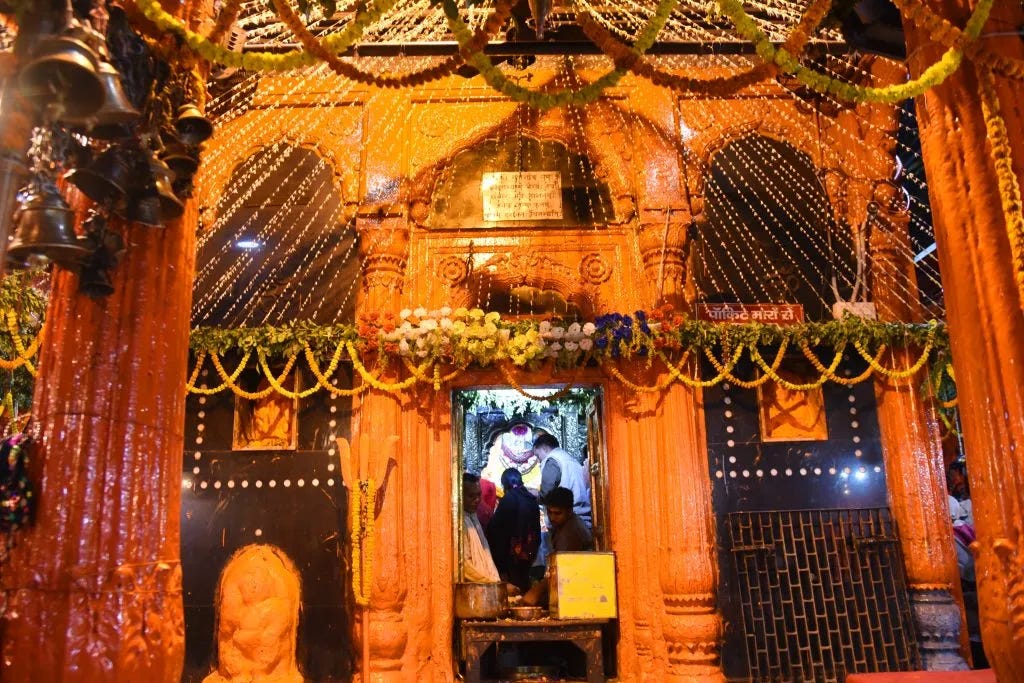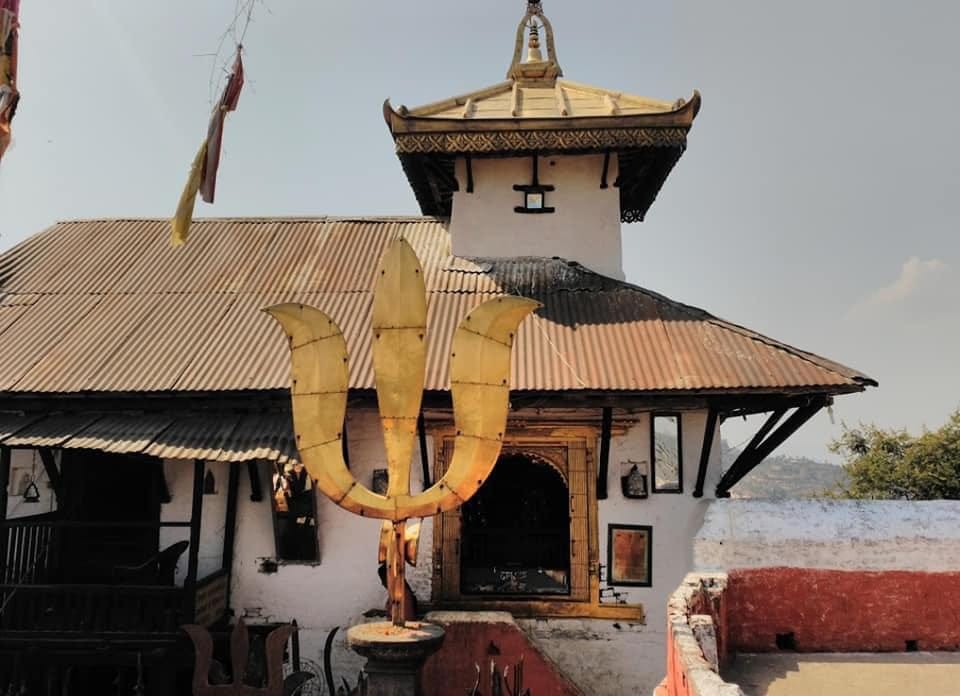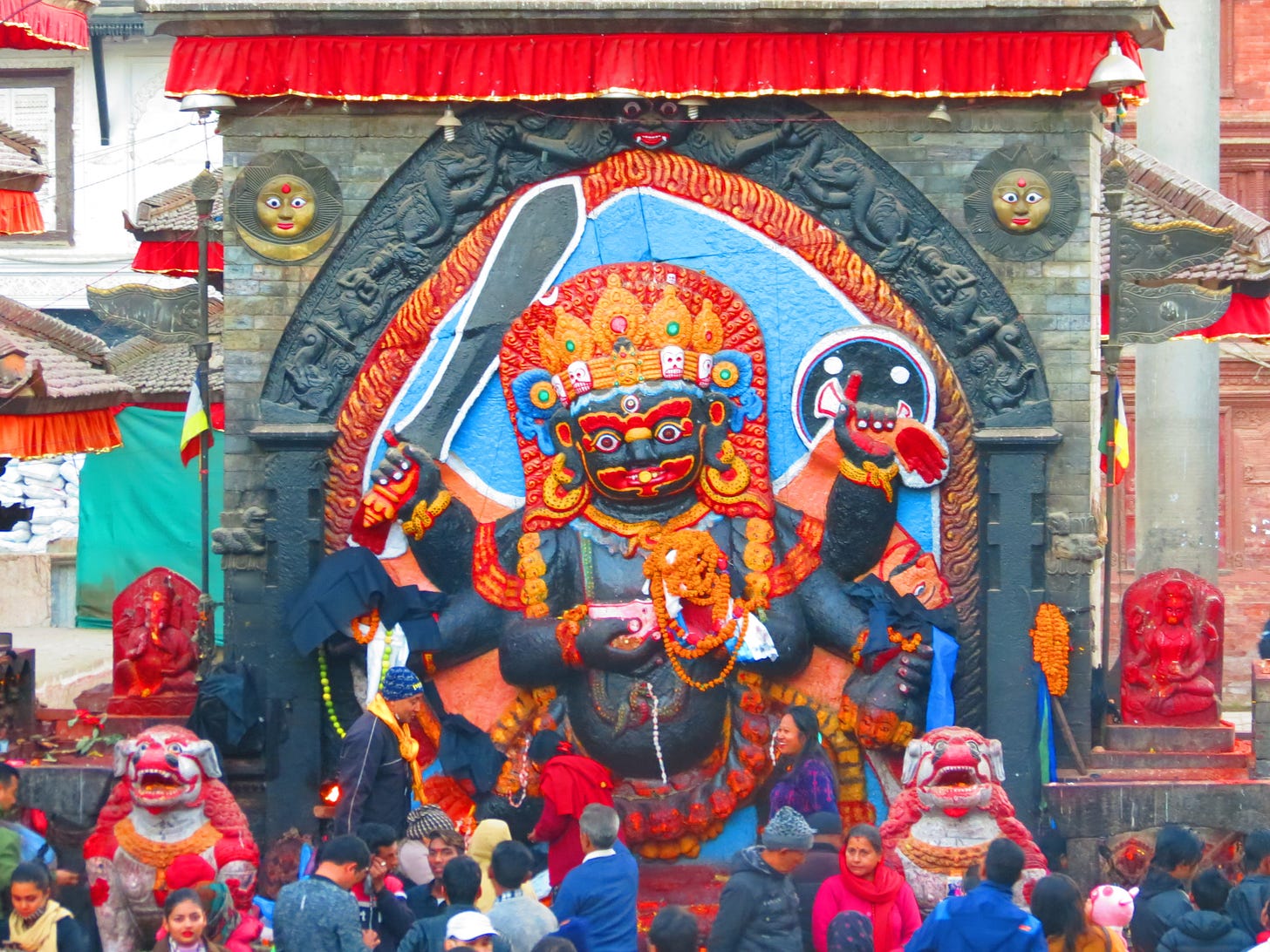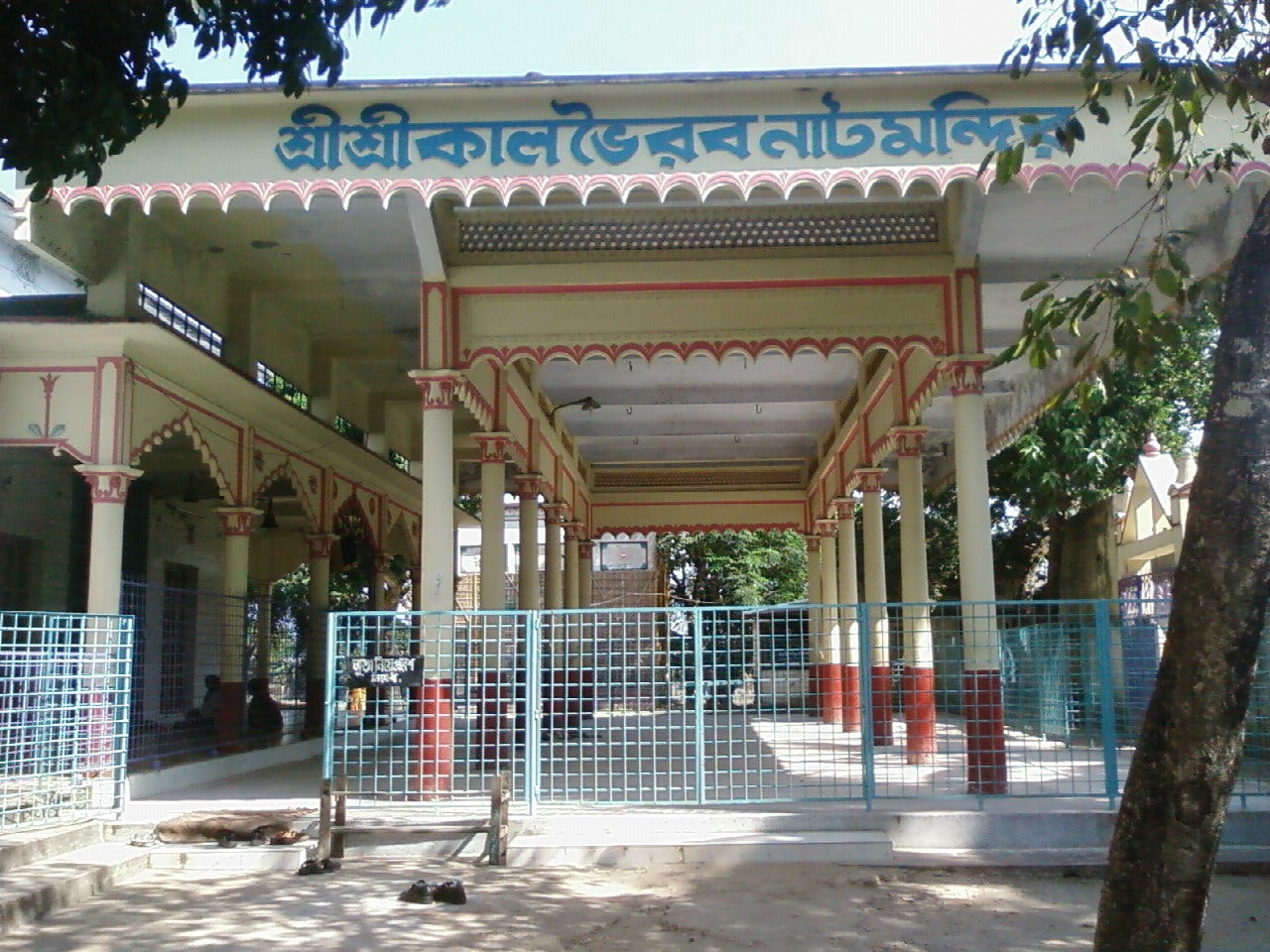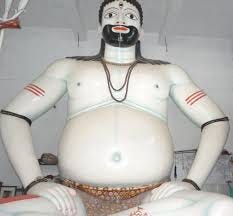Bhairav Jayanti, also known as Kaal Bhairav Ashtami, marks the divine manifestation of Lord Kaal Bhairav, the fierce and protective form of Lord Shiva.
It is believed that on this day, Lord Shiva appeared as Bhairav - the guardian of dharma and destroyer of evil - to restore cosmic balance.
Devotees observe fasts, chant the Kaal Bhairav Ashtakam, and visit Bhairav temples to seek his protection, courage, and wisdom. Worshipping Lord Bhairav on this day removes fear, negative energies, and karmic obstacles, granting strength, alertness, and spiritual awakening.
The 5 Greatest Kaal Bhairav Temples Around the World
Below are the five most powerful and historically significant temples dedicated to Lord Bhairav - where divine energy is said to be especially strong on Bhairav Jayanti.
1. Kaal Bhairav Mandir, Varanasi (India)
Location: Varanasi, Uttar Pradesh
Title: The Guardian Deity of Kashi
This is the most revered and ancient temple of Lord Kaal Bhairav in India. Varanasi - the eternal city of Lord Shiva - is said to be protected by Bhairav himself, earning him the title “Kotwal of Kashi” (The Protector of Varanasi).
According to legend, no one can live or perform rituals in Kashi without Bhairav’s permission. The temple is mentioned in sacred scriptures such as the Skanda Purana and Kashi Khand.
Unique Features:
The idol is fierce yet majestic, wearing a garland of skulls and seated on a dog (his vāhana).
Liquor (Madira) is offered to the Lord as prasād, symbolizing transcendence beyond worldly taboos.
Devotees visit this shrine before beginning any religious act in Kashi — from pilgrimage to Ganga rituals.
Spiritual Belief: Worshipping Bhairav here removes the fear of death and ensures liberation (moksha).
2. Kaal Bhairav Temple, Ujjain (India)
Location: Ujjain, Madhya Pradesh
Title: The Tantric Seat of Bhairav
Situated on the banks of the holy Shipra River, this temple is among the eight major Bhairav shrines of India, each representing different aspects of Lord Bhairav.
Ujjain, the city of Mahakaleshwar Jyotirlinga, is believed to be guarded by Bhairav — symbolizing protection through cosmic energy.
Unique Features:
Liquor offerings are made to the deity - even priests pour alcohol into a cup held by the idol’s mouth, which miraculously disappears, signifying divine acceptance.
The temple has a strong Aghori Shaiva connection; many Tantrics meditate here.
The idol is adorned with vermilion, flowers, and sacred threads representing power and fearlessness.
Spiritual Belief: Devotees seek protection from black magic, evil influences, and enemies.
3. Kaal Bhairav (Bhairabasthan) Temple, Baglung (Nepal)
Location: Baglung District, Western Nepal
Title: The Himalayan Protector
Nestled amidst the mountains, Bhairabasthan Mandir in Baglung is one of the most important Bhairav temples in Nepal. The name “Bhairabasthan” literally means “the abode of Bhairav.”
This temple attracts thousands of devotees during Bhairav Ashtami and Dashain, with rituals that combine ancient Shaiva and local traditions.
Unique Features:
The temple architecture beautifully blends Nepalese pagoda style with tantric iconography.
Historically, animal sacrifices were performed during major festivals — though now mostly symbolic.
The atmosphere is charged with mysticism, chants, and offerings of liquor and red flowers.
Spiritual Belief: The deity is believed to protect the Himalayan region from natural calamities and grant strength to devotees.
4. Kaal Bhairav Shrine, Kathmandu Durbar Square (Nepal)
Location: Hanuman Dhoka, Kathmandu
Title: The Judge of Truth
Within the UNESCO-listed Kathmandu Durbar Square lies an open-air shrine dedicated to Swet Bhairav and Kaal Bhairav. The giant 6-foot-tall stone statue of Bhairav here is one of the most iconic religious images in Nepal.
Unique Features:
The statue was discovered in the 17th century during the reign of King Pratap Malla.
In ancient times, royal courts administered oaths before this idol — those who lied were believed to face Bhairav’s wrath.
Devotees offer flowers, oil lamps, and liquor, while the site buzzes with tantric chants during festivals.
Spiritual Belief: Kaal Bhairav here is seen as the protector of justice and truth — the divine witness to all actions.
5. Kal Bhairab Temple, Brahmanbaria (Bangladesh)
Location: Brahmanbaria, Bangladesh
Title: The Giant Guardian of Bengal
The Kal Bhairab Temple in Bangladesh is unique for housing the world’s largest idol of Lord Bhairav, standing at nearly 28 feet tall and carved from a single stone.
This temple is not just a place of worship but also a symbol of Hindu heritage and cultural unity in Bangladesh.
Unique Features:
The massive stone idol of Kaal Bhairav, with a trident and menacing expression, inspires awe.
The temple complex also includes shrines for Lord Shiva and Goddess Parvati.
Annual Bhairav Puja and Durga Puja celebrations attract thousands from India and Bangladesh alike.
Spiritual Belief: The Lord here is invoked as the protector of devotees and remover of obstacles across all borders.
Rituals and Worship on Bhairav Jayanti
On Bhairav Jayanti (Margashirsha Ashtami), devotees:
Observe fasts and meditate on Lord Shiva’s fierce form.
Chant the Kaal Bhairav Ashtakam by Adi Shankaracharya.
Offer black sesame, mustard oil lamps, and liquor to the deity.
Feed and worship black dogs, believed to be Bhairav’s loyal companions.
Many perform night-long vigils (Jagran) with recitations of the Rudra Path and Shiv Chalisa, invoking courage, protection, and spiritual purification.
Essence of Bhairav Worship
Lord Bhairav embodies alertness (chetana), discipline (niyam), and fearlessness (abhaya).
He is the guardian of sacred spaces, the remover of illusions, and the punisher of injustice.
Worshipping him on Bhairav Jayanti helps devotees overcome fear, ignorance, and karmic suffering - guiding them toward self-realization and truth.
“When fear dissolves in faith, Bhairav awakens within.”
On this Bhairav Jayanti, may the divine energy of Lord Kaal Bhairav protect your path, destroy your obstacles, and awaken your inner strength.
Jai Kaal Bhairav!


